- World Population Review Newsletter
- Posts
- The Biggest Things Humans Are Building Right Now
The Biggest Things Humans Are Building Right Now
Inside the mega-projects redefining power, cities, and economies.
In partnership with Frontera Brands
Greetings, visionary of progress and possibility,
Across the globe, cranes are rising—and so are ambitions.
From tunnels beneath oceans to AI-powered desert cities, nations aren’t just pouring concrete. They’re betting big on the future.
This isn’t just construction. It’s strategy. Power. Vision.
So—where are the boldest projects breaking ground? And what could they mean for your life, your moves, your money?
Let’s find out. The world is building again.
Most B2B Brands Sound the Same. Yours Doesn’t Have To.
It’s time to stop copying the category leader and start owning your difference. How Brands Win is the free newsletter showing 10,000+ B2B founders how to position their brand to grow.
It’s hard to talk about megaprojects without invoking China. The scale, speed, and sheer audacity of its infrastructure drive are almost mythic—and entirely real.
The Belt and Road Initiative (BRI), spanning 150+ countries, is more than trade—it’s influence set in stone and steel. Chinese firms are building railways in Africa, pipelines in Central Asia, and shipping ports in Europe. One Chinese-financed railway in Kenya, for instance, cut travel time from Nairobi to Mombasa in half.
Domestically, China's high-speed rail network now stretches over 45,000 kilometers. Imagine hopping from Beijing to Shanghai—equivalent to New York to Chicago—in under five hours, every day, like clockwork.
And then there’s water. The South–North Water Transfer Project spans more than 1,500 kilometers, rerouting major rivers to hydrate northern cities. A $60 billion plumbing system the size of a continent.
Fascinating fact: China poured more concrete between 2011 and 2013 than the U.S. did in the entire 20th century. Let that sink in.
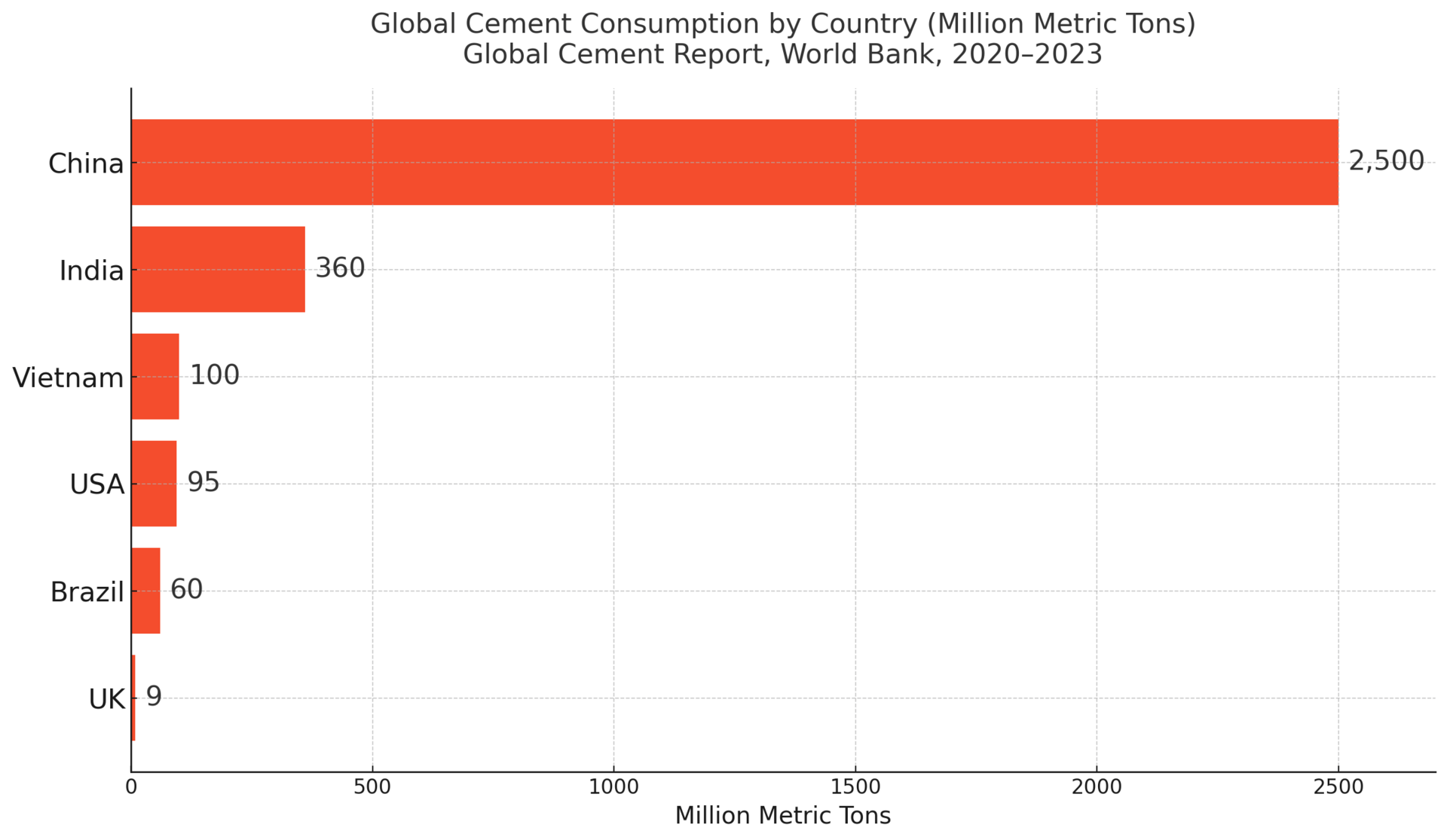
America, long the home of vast highways and bold engineering, is entering a long-overdue infrastructure renaissance. With the $1.2 trillion Infrastructure Investment and Jobs Act, the U.S. is finally getting serious about its aging foundations.
From rusting bridges to outdated water systems, the repairs are monumental—but so is the opportunity. Some 45,000 bridges are rated structurally “poor,” and now billions are being poured into modernizing them.
Meanwhile, high-speed rail may soon become more than a fantasy. Amtrak’s Northeast Corridor upgrade will eventually ferry passengers at 160 mph, cutting commute times and bringing the U.S. closer to international standards.
And it’s not just concrete. The U.S. is investing $65 billion into broadband internet, aiming to bring digital equity to rural areas. It’s about stitching together more than roads—it’s about wiring every household for the future.
Perspective twist: The U.S. is building a national EV charging network with the same ambition it once reserved for highways. What Eisenhower did for cars, Biden aims to do for electric ones.
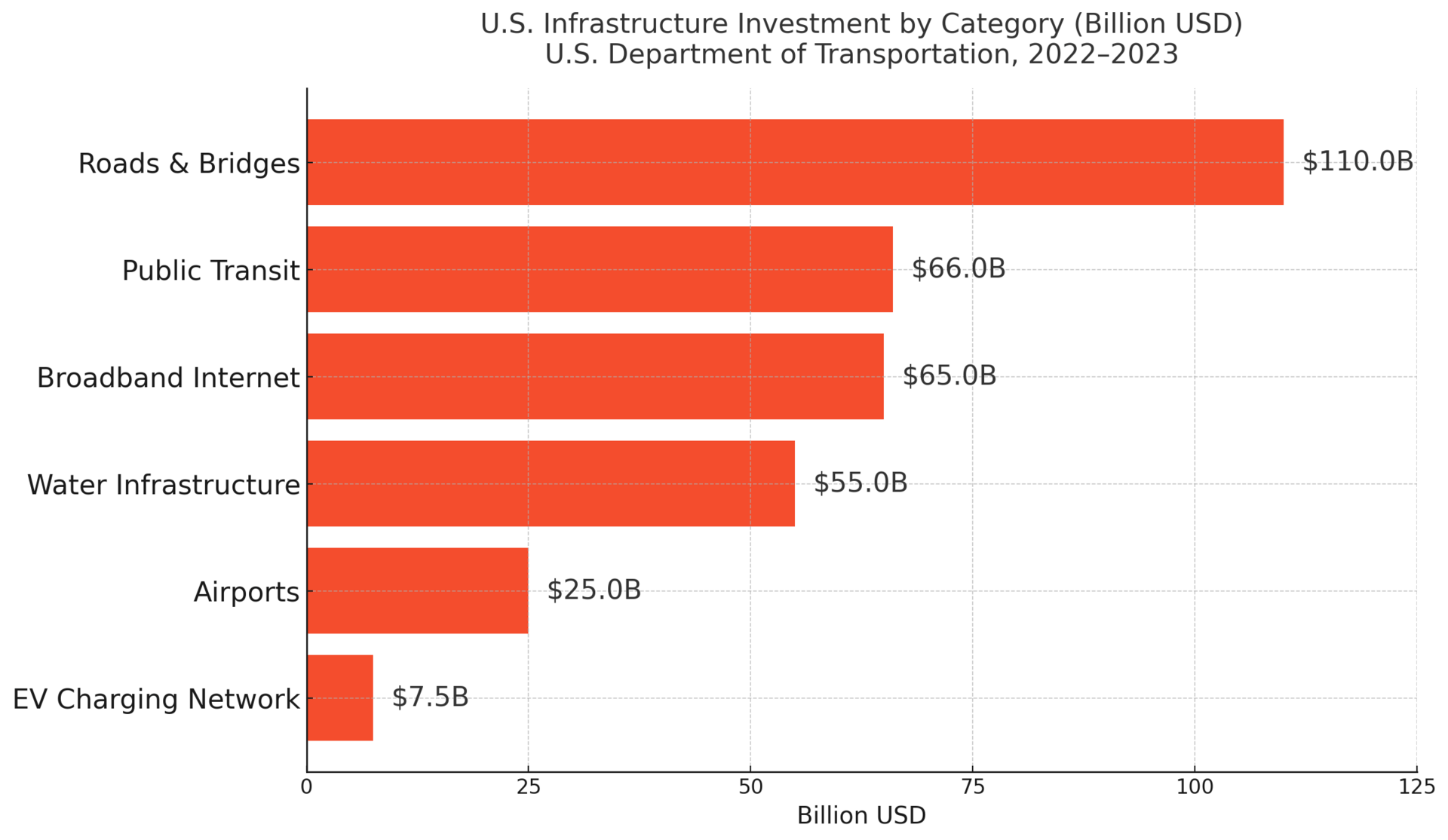
India, home to over 1.4 billion people, is building at a breathtaking pace—because it must. Every day, 30 new cities emerge as India urbanizes at scale, and infrastructure is racing to keep up.
The Mumbai–Ahmedabad bullet train, using Japanese Shinkansen tech, is expected to reach speeds of 320 km/h. It’s not just about speed—it’s about signaling that India’s time is now.
But perhaps more quietly transformative is the Green Energy Corridor—a $5 billion effort to move renewable energy from sun-soaked deserts and wind-blasted coasts into the national grid. Over 20,000 MW of clean power, delivered to the heart of the country.
And then there’s logistics: The Bharatmala Project plans to build 83,000 km of highways by 2027, transforming how goods and people move across the subcontinent.
Did you know? India is constructing the world’s tallest railway bridge over the Chenab River. It will stand 35 meters taller than the Eiffel Tower.
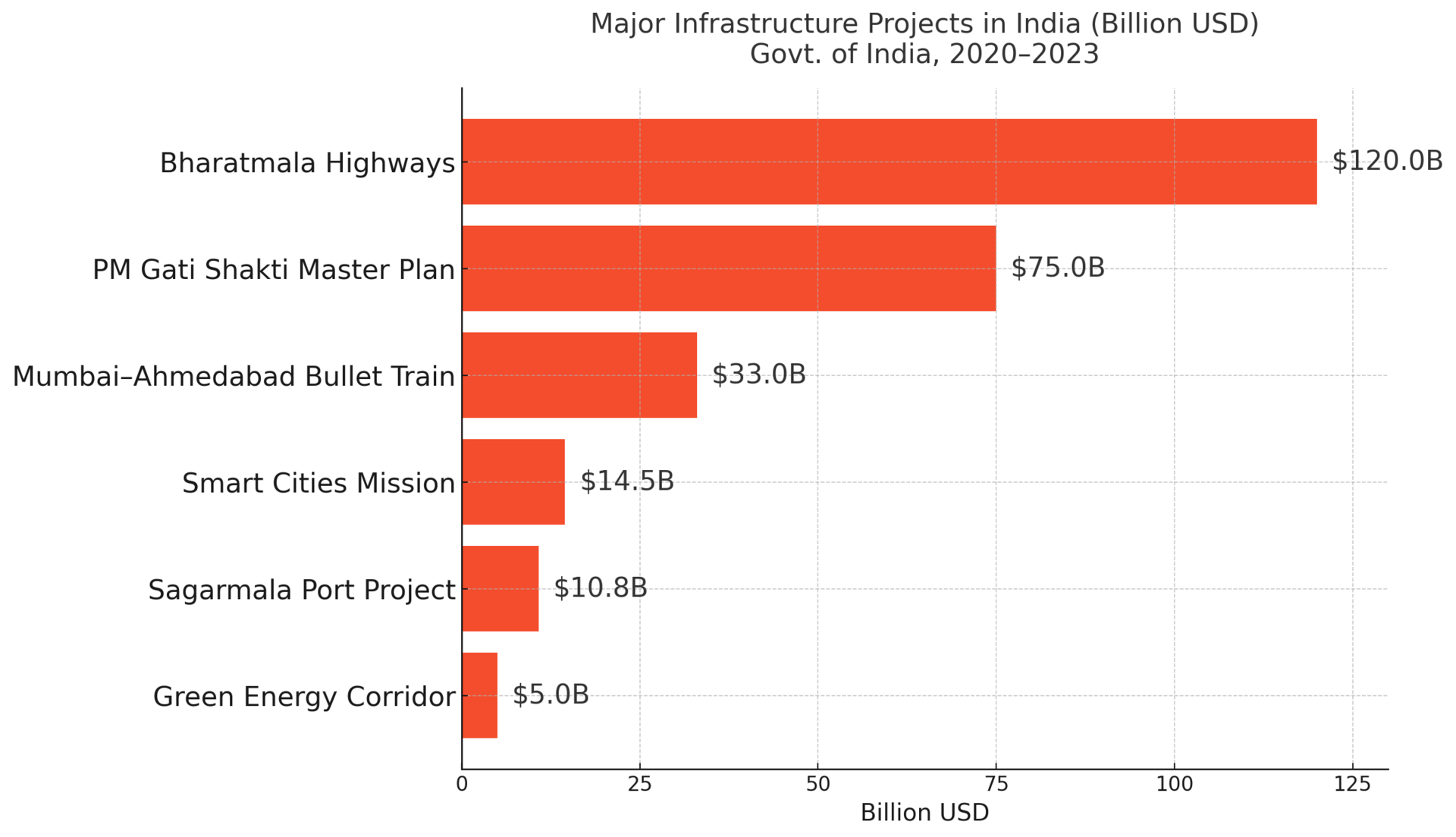
B2B Positioning That Doesn’t Suck
Most B2B brands compete on price or buzzwords. How Brands Win gives you real strategy to fix weak messaging and clarify your value — so your brand gets chosen, not overlooked.
If infrastructure were a spectacle, the Middle East might be its showman.
In the Gulf, oil wealth is being funneled into cities that feel like science fiction. At the heart of it all is Saudi Arabia’s NEOM, a $500 billion city built from scratch. Its signature project, The Line, is a 170-km long linear city with no cars, no roads, and no carbon emissions.
Meanwhile, Riyadh Metro—spanning six lines—is nearing completion, bringing high-capacity public transport to a city long dependent on cars.
In the UAE, Masdar City serves as a living laboratory for clean-tech, AI, and sustainable architecture. It's a working experiment in what urban life might look like post-carbon.
Unexpected gem: NEOM’s airport is being designed with drone corridors and autonomous transport hubs—making it one of the first airports built for flying taxis.
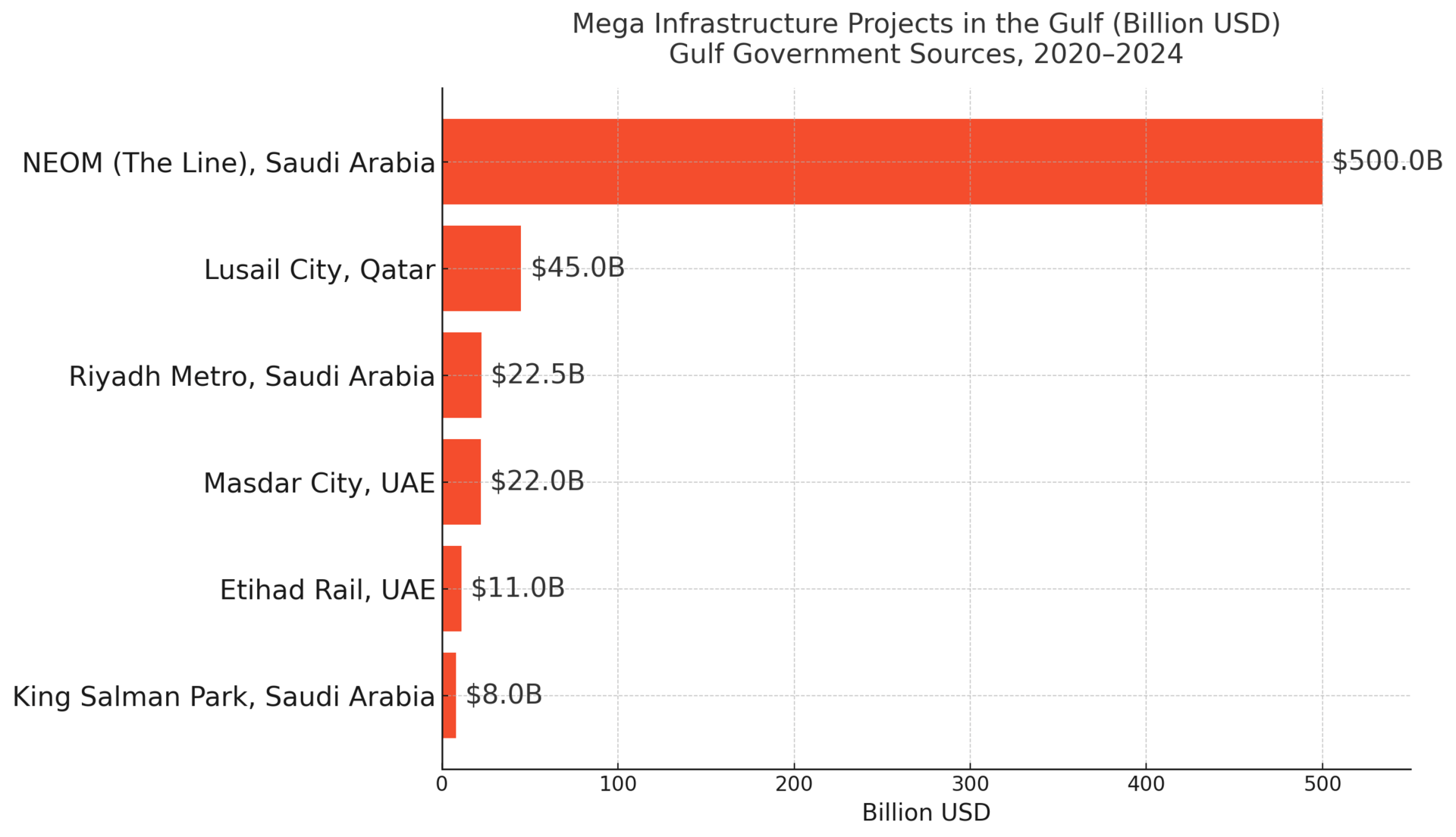
Europe isn’t building the tallest or the flashiest—but it’s building with long-term vision and climate resilience.
Germany, the EU’s economic engine, has invested over $500 billion in the Energiewende, a national pivot away from coal and nuclear toward renewables. Now, 50% of its electricity comes from wind, solar, and biomass.
Across the continent, new rail tunnels, such as the Fehmarnbelt Fixed Link between Germany and Denmark, are reshaping transport. When complete, it will be the world’s longest immersed tunnel—slashing travel times and carbon emissions.
Urban reinvention is also on the rise. Paris’s “15-minute city” initiative is redesigning neighborhoods so residents can live, work, shop, and relax—all within a short walk or bike ride.
Fresh insight: Europe’s green infrastructure investments could total over €800 billion by 2040. That’s not stimulus—that’s climate strategy.
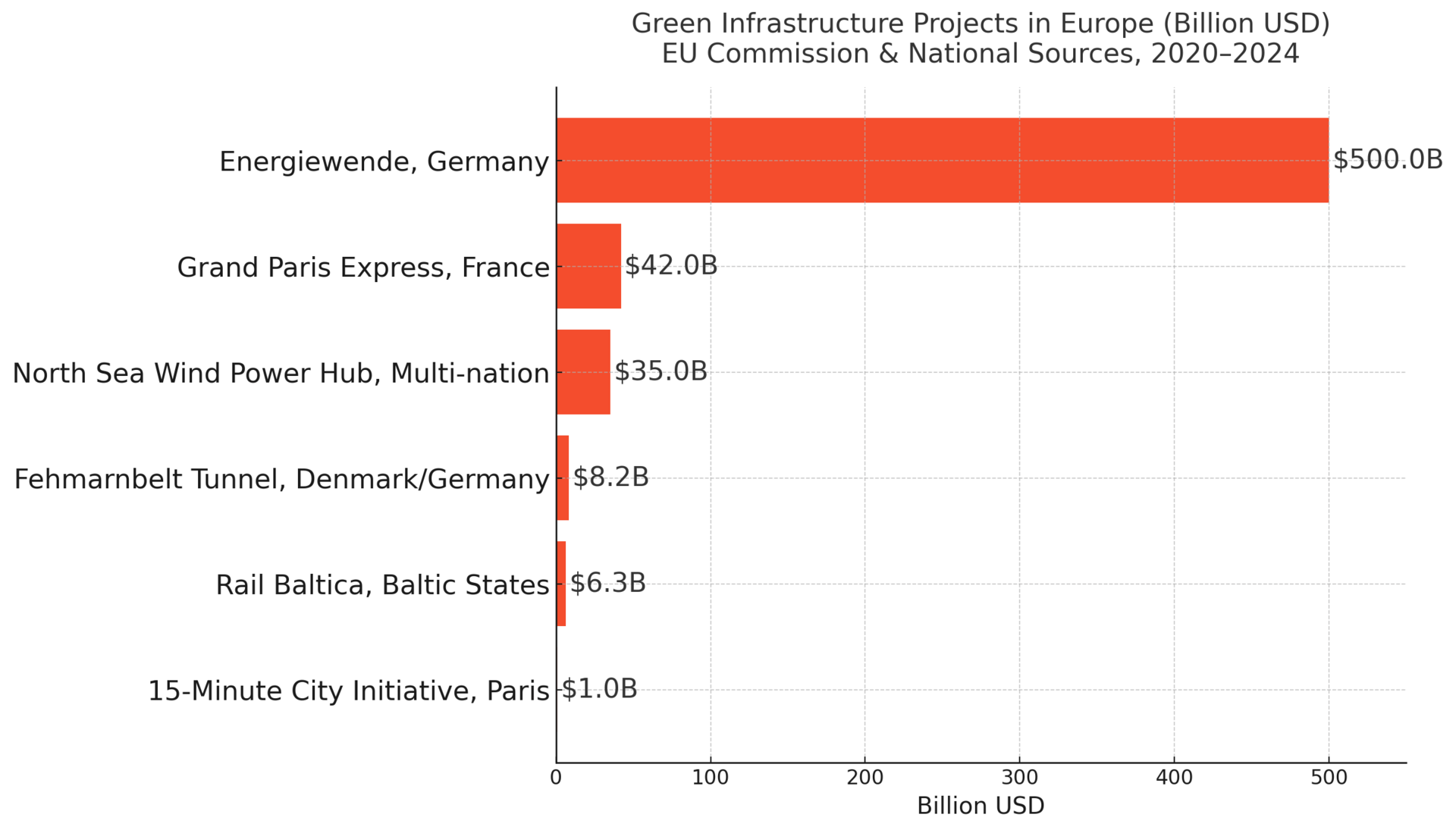
Africa faces a paradox: it has enormous potential, but a $100 billion annual infrastructure gap. Still, the continent is making bold strides.
In Nigeria, Lagos Rail Mass Transit has finally launched, easing the daily burden of millions in Africa’s largest city. In Ethiopia, the Grand Renaissance Dam promises power for a country where 60% of citizens still lack electricity.
Pan-African ambitions are also rekindled. The Trans-African Highway—a sprawling network meant to connect Cape Town to Cairo—is gaining traction after decades of false starts.
But the barriers are real: financing, governance, and conflict continue to challenge progress.
Compelling contrast: Africa has 60% of the world’s solar potential but only 1% of global solar capacity installed. The room for growth? Massive.
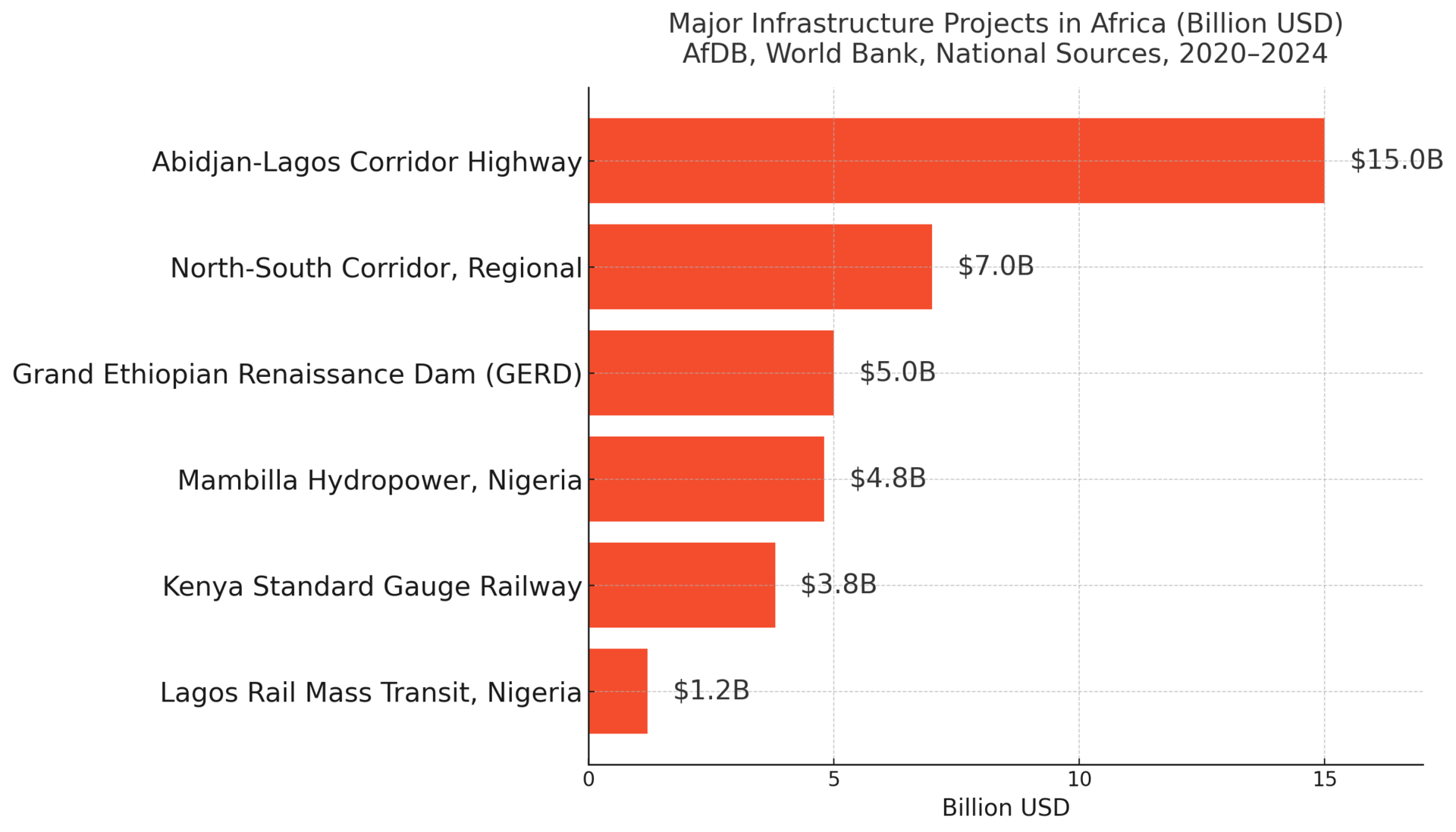
In Latin America, infrastructure is a dance with volatility. Political shifts, inflation, and social unrest test even the most ambitious plans—but the region keeps building.
Mexico’s Tren Maya is a $10 billion passenger rail traversing five states, aiming to boost tourism and integrate the historically underdeveloped south.
Chile, tackling a severe water crisis, has become a global leader in desalination technology—and is quietly building Latin America’s first large-scale green hydrogen plant.
In Brazil, toll roads are being privatized at scale, unlocking billions in private investment for logistics—critical in a country where goods often move slower than in neighboring Argentina.
What to watch: Chile’s green hydrogen experiment could become a new economic pillar—one powered by wind and water, not oil.
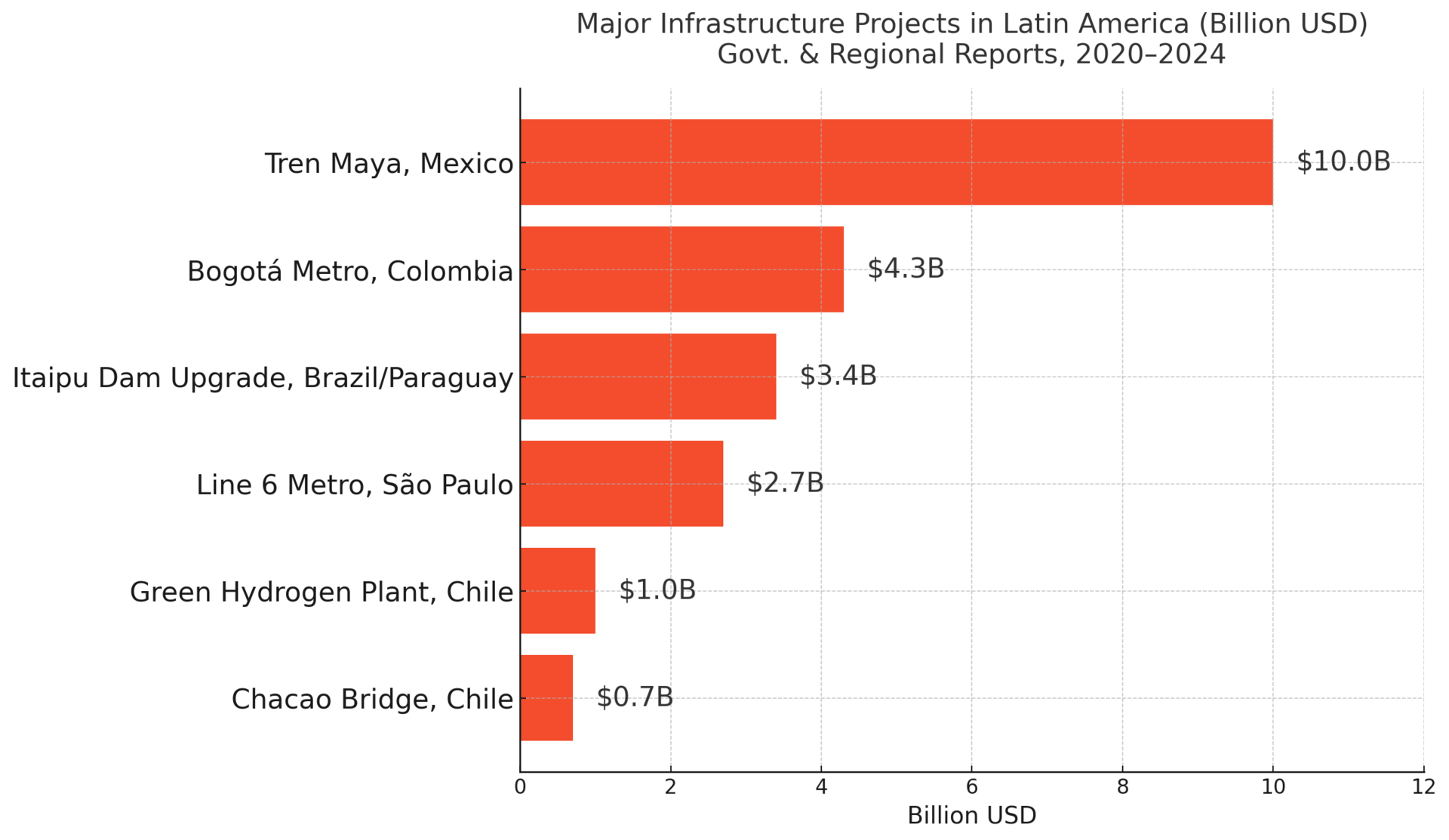
Where steel rises, futures are forged.
From bullet trains in Asia to wind farms in the North Sea, the world isn’t just laying foundations—it’s making declarations.
Infrastructure reveals what nations believe in. Where they’re headed. And why it matters to you.
Whether you're thinking of where to live, invest, or simply stay ahead of the curve—follow the cranes. They always lead somewhere interesting.
Stay curious. Stay ready. The world is under construction.
Warm regards,
Shane Fulmer
Founder, WorldPopulationReview.com
P.S. Want to sponsor this newsletter? Reach 124,000+ global-minded readers — click here!

